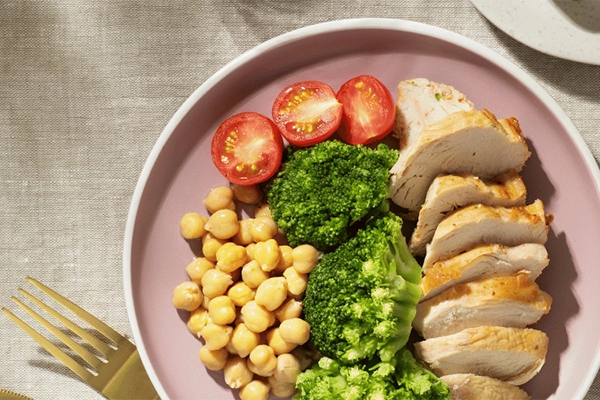Topics
Why do I feel “windy” after eating?
Our gastrointestinal (GI) or digestive tract is a long hollow tube with an entrance at the top, the mouth, and an exit at the bottom, the anus. It is impossible for our gastrointestinal tract to be a windless vacuum because every time we talk and pass motion, air enters. So, wind is not the issue but the ability of our bowels to accommodate air.
Experiments have been done whereby balloons are inserted into the stomach and rectum of normal people and people with sensitive stomach (functional dyspepsia) and sensitive colon (irritable bowel syndrome or IBS).
At a balloon volume where normal people do not experience any discomfort, people with hypersensitive bowels feel bloated.
Most people who mention about feeling “windy” are actually referring to a bloated abdomen. There are 6 (plus 1) causes of abdominal bloating. The first 6 causes begin with the letter “F”:
- Flatus (wind or gas)
- Fluid
- Food
- Fat
- Faeces
- Foetus
- Enlarged organs
How does science explain “windy foods”?
There is no denying that some foods have a greater tendency to form gas upon digestion. In 2012, Professor Peter Gibson of Monash University, then working in Box Hill Hospital, Melbourne first proposed that patients suffering from irritable bowel syndrome (IBS) to be treated with a low FODMAP diet.
FODMAP stands for Fermentable Oligosaccharides, Disaccharides, Monosaccharides, and Polyols. Fermentation produces carbon dioxide and also hydrogen gases such as hydrogen sulphide (rotten egg gas). In the bowel, this fermentation process leads to symptoms like abdominal cramps, bloating, excessive gas, and diarrhoea.
Let us understand each component of FODMAP.
- Oligosaccharides are short chains of 3 to 10 sugar molecules, and the most common ones, raffinose and stachyose, are found in beans, peas, and lentils.
- Disaccharides are sucrose, lactose, and maltose.
- Monosaccharides are glucose, galactose, and fructose.
- Polyols are sugar alcohols, like sorbitol and mannitol, that are formed through catalytic hydrogenation of carbohydrates. They are found naturally in certain fruits, vegetables, and mushrooms; however, they are also commonly used as sugar-free sweeteners in products such as chewing gum, candies, and beverages.
However, how do we put this knowledge into practice?

What’s the practical approach towards “windy foods” in my daily diet?
The low-FODMAP diet first started in 2012 as a treatment for people suffering from IBS. Since then, it has been adopted by people with a sensitive stomach.
There are 5 groups of FODMAP that can cause digestive disorders including the feeling of “windy” or bloating.
- Fructose, also known as fruit sugar, is a type of simple sugar in fruits.
- Lactose is sugar in dairy products.
- Fructans are sugars in grains and vegetables.
- Galactans are found in legumes.
- Polyols are found in sweetened products as artificial sweeteners
How do I follow a low-FODMAP diet?
There are 3 phases to the FODMAP dietary program.
Phase 1: Restriction
- All high-FODMAP foods have to be omitted from the diet for at least 2 weeks, up to 8 weeks if remain symptomatic.
- Keep a food diary to help you to monitor intake and symptoms.
- Many alternative foods can be consumed whilst following a low-FODMAP diet.
- Take a well-balanced meal even if you are on a low-FODMAP diet.
Phase 2: Introduction
- Diversify the diet over 6 to 10 weeks and improve adherence.
- Food groups are introduced one at a time.
Phase 3: Personalisation
- Tailor or personalise each patient’s low-FODMAP diet.
Below is a list of foods to avoid and to enjoy for each food group.
- Fruits
- Avoid: Local fruits like rambutan, mango, watermelon, and pisang emas. Other fruits like apples, pears, peaches, persimmon, apricots, plums, prunes, blackberries, cherries, and lychees
- Enjoy: Local fruits like bananas except pisang emas, pineapple, papaya, guava, and durian. Other fruits like citrus fruits, blueberries, raspberries, grapes, kiwi, honeydew, passion fruit, and dragon fruit
- Vegetables
- Avoid: Asparagus, beetroot, Brussel sprouts, corn, cauliflower, broccoli, garlic, leeks, lady’s finger, onions, spring onion (white part), mushroom, sweet potatoes, and processed tomatoes
- Enjoy: Bamboo shoots, bean sprouts (taugeh), bok choy, carrot, cabbage, capsicum, choy sum, brinjal, lettuce, potato, pumpkin, spring onion (green part), cucumber, zucchini, yam, spinach, kalian, water chestnut, ginger, chili, galangal, seaweed, and fresh tomatoes
- Drinks (Fructose)
- Avoid: Fruit juices, honey, cider, rum, sparkling wine, dessert wine, soft drinks, and corn syrup sweetened with fructose
- Beverages (Fructose)
- Avoid: Oolong tea, herbal tea, and dandelion tea
- Cereals (Fructose)
- Avoid: Gluten, wheat, barley, rye, mixed grain cereals, and muesli
- Enjoy: Gluten-free products, corn flakes, oats, rice, potato, tortilla chips, and soba
- Nuts (Suctose)
- Avoid: Cashew and pistachio nuts
- Enjoy: Macadamia, peanut, pecan, walnut, pine nut, sesame seeds, pumpkin seeds, sunflower seed (less than 1 handful per day), chia seed (2 tablespoons), flaxseed (1 tablespoon)
- Dairy (Lactose)
- Milk
- Avoid: Cows’, goats’, and sheep’s milk
- Enjoy: Lactose-free cows’ milk
- Cheese
- Avoid: Fresh cheeses like cottage, ricotta, cream cheese, and mascarpone
- Enjoy: Aged cheeses, brie, camembert, cheddar, cheshire, feta, swiss, mozzarella, parmesan, creamed cottage cheese, and blue cheeses
- Others
- Avoid: Yoghurt, ice cream, custard, cream; evaporated, condensed, and butter milk
- Enjoy: Butter, lactose-free yoghurt, dairy-free gelato, and sorbet
- Milk
- Sweeteners (Polyols)
- Avoid: Sorbitol, mannitol, xylitol, maltitol, isomalt, and erythritol
- Sauces
- Enjoy: Brown sugar, stevia, sucralose, aspartame, maple syrup, and golden syrup
- Condiments
- Enjoy: Tamarind paste, belacan, miso paste, and wasabi powder (not paste)
- Herbs & Spices
- Enjoy: Lemongrass, coriander, paprika, cumin, five-spice powder, pandan, basil cilantro, rosemary, parsley, tamarind, and thyme
- Meat Alternatives
- Enjoy: Egg, tofu, and tempeh
Book an appointment at Pantai Hospitals
The caring and multidisciplinary team of healthcare professionals are available for consultation and to provide the best care. Get in touch with us to find out more about Gastroenterology and Nutrition & Dietetics services at your nearest Pantai Hospital.
Pantai Hospital Malaysia is accredited by the Malaysian Society for Quality in Health (MSQH) for its commitment to patient safety and service quality.














